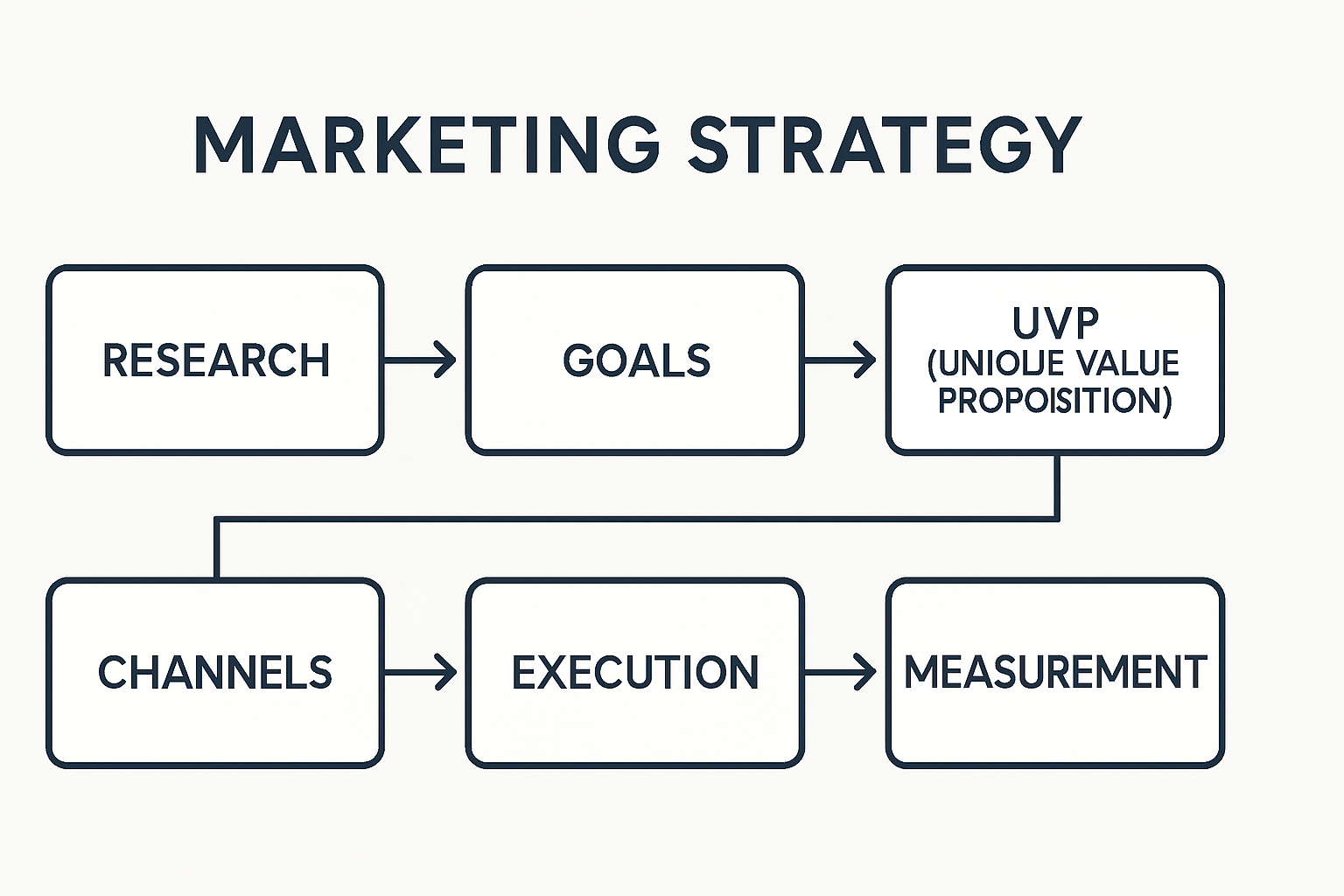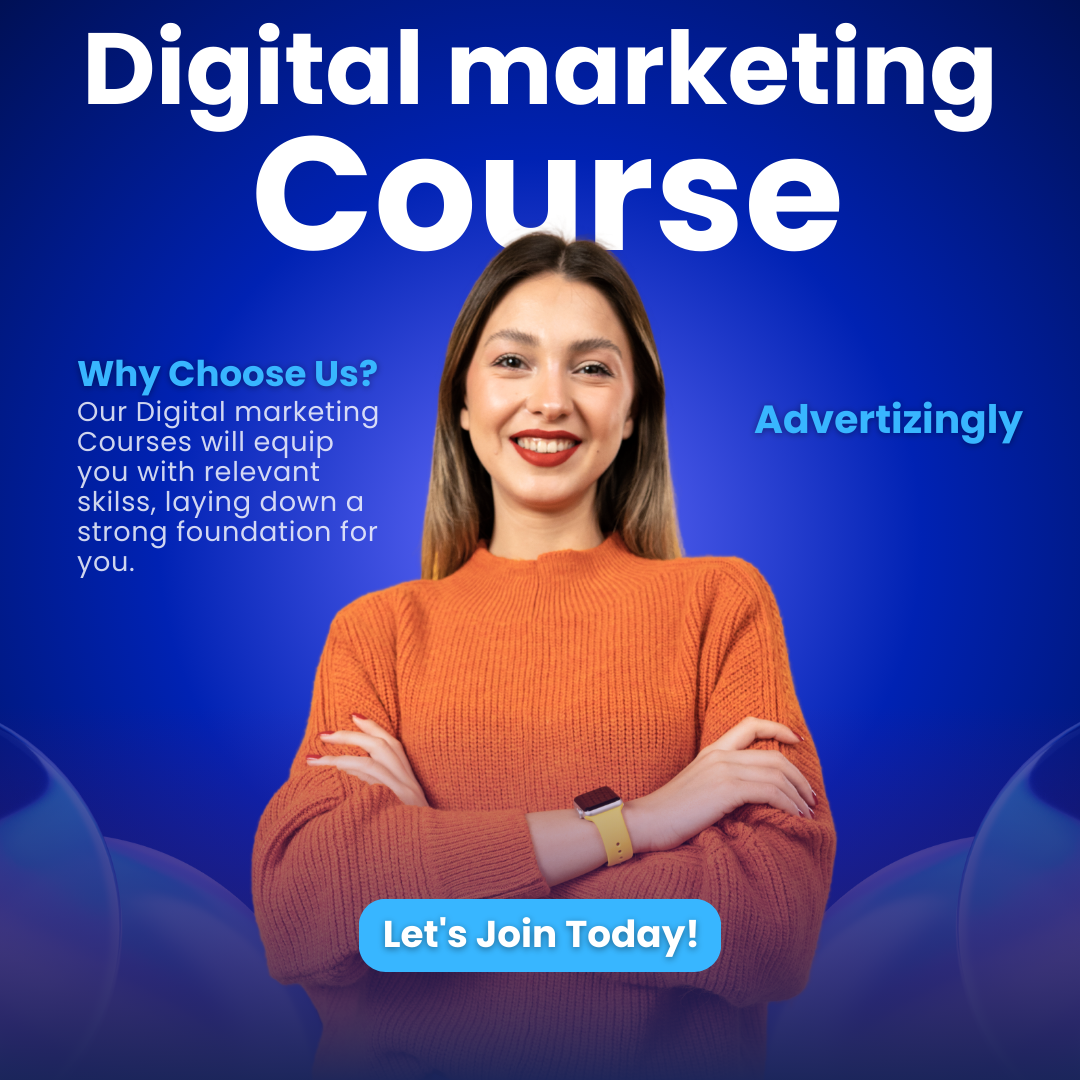A marketing strategy is a clear plan that helps businesses reach the right customers and grow. If you’ve ever wondered how brands decide where to advertise, which message to use, or how to stay ahead, this guide will explain it all. We’ll explore what marketing strategies are, why they matter, and how to build your own—using simple language, real examples, and insights into methods like omnichannel marketing, conversion rate optimization (CRO), content marketing, and more. By the end, you’ll understand how to create a strategy that works for your business.
Read More : Is Search Engine Optimisation (SEO) worth it in 2025?
What Is a Marketing Strategy?
A marketing strategy is a long-term, comprehensive plan that outlines how your business will present its value to customers, often aligning with your vision and big-picture goals.
It’s more than just a collection of ads or promotions—it covers your value proposition, brand messaging, target audience demographics, and objectives like increasing sales or awareness.
Why It Matters
- Focus and alignment: A strategy gives structure and direction, helping teams coordinate and stay on-message.
- Repeatable success: Once you find a strategy that works, you can scale and repeat it consistently.
- Measurable growth: Marketers who document their strategy are far more likely to report success. One survey found they’re 331% more likely to succeed—and 674% more likely if they organize well.
Key Components of a Marketing Strategy
Building a strategy typically involves:
- Market Research & Audience Insights – Understand behaviors, trends, and pain points.
- Goals & KPIs – Set SMART objectives: specific, measurable, achievable, realistic, and time-bound.
- Unique Value Proposition (UVP) – What makes your brand stand out?
- Channels & Tactics – Choose between omnichannel, content, email, paid, etc.
- Execution & Budgeting – Allocate resources wisely.
- Measurement & Optimization – Track performance, tweak strategy, and improve over time.
Read more : Using AI, Measurement, and Sustainability for Marketing in 2025
Marketing Strategies and Techniques for Business
1. Omnichannel Marketing
This approach ensures your brand is consistent and seamless across all touchpoints—from your website to emails, social media, in-store, ads, and more. Customers expect the same message and experience no matter where they engage with you.
2. Cross-Channel Marketing
Similar to omnichannel but less integrated. It means using several channels (like email, social, paid ads), typically in parallel. The goal is to drive awareness and conversions across those mediums.
3. Content Marketing
Creating and sharing useful content—blogs, videos, social media—that doesn’t push sales directly but builds trust and interest. For example, a company posting regular blog tips to educate customers.
4. Email Marketing
Direct messaging to subscribers—promotions, newsletters, updates—used to nurture leads, drive repeat sales, or communicate updates.
5. Conversion Rate Optimization (CRO)
Focusing on improving the percentage of website visitors who take desired actions—like buying, signing up, or downloading. This involves testing page layouts, headlines, calls to action, and offers.
6. Performance Marketing
Data-driven advertising where you pay for measurable results, such as clicks, leads, or sales, typically through digital channels like PPC, social ads, or affiliate programs.
7. Growth Marketing
An experimental and analytics-driven approach—rapid testing of new tactics to grow acquisition, adoption, engagement, and retention.
Read more : Benefits of Digital Marketing
Additional Techniques & Examples
Guerrilla Marketing
Creative, low-cost campaigns that surprise or delight an audience—designed to create buzz. For example, Coca-Cola’s “Happiness Machine” vending machine that surprised students and went viral.
Viral Marketing
Content that spreads quickly by word of mouth or social sharing—like Oreo’s “You can still dunk in the dark” post during a Super Bowl blackout.
Strategic (Long-Term) vs Short-Term
Strategic marketing aligns with your brand’s mission and long-term growth—unlike short-term promotions or campaigns.
Real-Life Marketing Strategy Examples
- Volvo expanded messaging from just safety to also include design and technology, making the brand more relevant and emotionally appealing.
- TD Bank, under CMO Jennie Platt, boosted awareness and marketing-influenced sales by doubling efforts on DEI messaging and personalized campaigns, doubling contribution to sales by 2024.
- EY (Ernst & Young) launched “All In” campaigns aligning strategy, brand refreshes, and storytelling films to elevate global presence and brand favorability.
Read More : 10 Social Media Trends For 2025
Step-by-Step: How to Build Your Own Marketing Strategy
H2: Step-by-Step Guide
- Conduct Market Research
Use surveys, focus groups, digital tools to understand customer needs and competitor moves. - Define Clear, SMART Goals
Set measurable targets like increasing web traffic by 20% in six months. - Identify Your Target Audience
Build personas: demographics, behaviors, pain points, preferences. - Craft Your UVP
Summarize why customers should choose you—such as “fast delivery of eco-friendly goods.” - Choose Channels & Strategies
Decide if you’ll focus on content, email, CRO, omnichannel experiences, performance marketing, etc. - Allocate Budget & Resources
Decide how much to invest per channel and plan content schedules. - Execute & Monitor Results
Launch tactics, track performance metrics (CRO rates, CLV, engagement), and compare vs KPIs. - Adjust & Optimize
Double down on what works; pivot where needed. - Track Customer Lifetime Value (CLV)
Measure how much revenue a customer brings over time—and how your strategy improves that.
Ready More : What is Digital Marketing?
FAQs (Featured Snippet Optimization)
Q: What is the difference between a marketing strategy and a marketing plan?
A marketing strategy is a long-term game plan defining why and who—your vision, target, and value proposition. A marketing plan details what, when, and how—the specific campaigns and timelines.
Q: Why is customer lifetime value (CLV) important?
CLV tells you how much a customer may spend over time. Focusing on CLV helps prioritize strategies that retain customers for long-term profitability.
Q: How does content marketing help strategy?
By offering helpful, non-sales content, you build trust, demonstrate expertise, and stay top-of-mind—boosting organic traffic and conversions over time.
Conclusion
A marketing strategy is your business’s roadmap to reach customers, build trust, and grow sustainably. It’s about knowing your audience, clarifying what makes you different, and choosing the right mix of methods—like omnichannel, content, CRO, email, performance, and growth marketing—to meet them where they are.
Remember to set clear goals, measure results (like CLV and conversion rates), and continuously refine your approach. With strategy in place, every campaign becomes more focused, repeatable, and powerful.
Ready to get started? Create your first strategy today—with clear goals, smart tactics, and customer insights. Need help developing ideas or evaluating your channels? Let me know—I’d love to help you plan it out.
We are a Digital Marketing Agency , From SEO to performance marketing, we deliver results that boost visibility, leads, and ROI.

